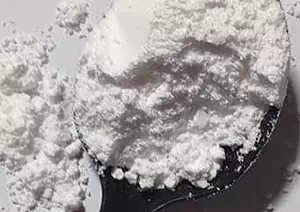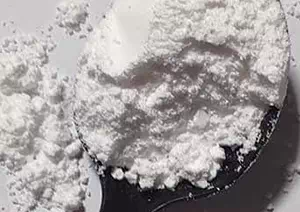All Categories


Triethylenediamine CAS 280-57-9, Triethylenediamine, CAS 280-57-9
Chemical Name: Triethylenediamine (Also known as triethylenediamine, triethylenediamine, TEDA, DABCO)
CAS : 280-57-9
Formula : C6H12N2
Mol. wt. : 112.17
EINECS : 205-999-9
| CAS | 280-57-9 |
| Molecular formula | C6H12N2 |
| Molecular weight | 112.17 |
| EIENCS | 205-999-9 |
| Form | Hygroscopic Crystals |
| Melting point | 156-159 °C(lit.) |
| boling point | 174 °C |
| Density | 1.02 g/mL |
| Solubility | 400g/l |
| PKA | 3.0, 8.7(at 25℃) |
| Color | White to pale yellow |
| Storage temp |
Chemical Name: Triethylenediamine (Also known as triethylenediamine, triethylenediamine, TEDA, DABCO)
Molecular formula: C₆H₁₂N₂
Molecular weight: 112.17 g/mol
CAS Number: 280-57-9
Appearance: White to light yellow crystalline powder (may turn slightly yellow after long-term storage or exposure to light), with an ammonia smell
Solubility: Readily soluble in polar solvents such as water, ethanol, and acetone, slightly soluble in non-polar solvents (such as benzene and petroleum ether)
Polyurethane industry (dominant use, accounting for 70% of demand)
High-efficiency catalyst: Accelerates the reaction between isocyanate and polyol, enhancing the stability, mechanical strength and impact resistance of foam.
Energy-saving advantages: It maintains high activity at low temperatures, reduces energy consumption, and is suitable for products such as car seats and furniture sponges.
Modification of polymer materials
Epoxy resin curing agent: Forms a three-dimensional network structure, enhancing the adhesion and chemical corrosion resistance of the coating.
Plastics and rubber: As a heat stabilizer, it prevents high-temperature decomposition and extends the material's lifespan.
Medicine and Agriculture
Pharmaceutical intermediates: Synthetic chelating agents (for treating heavy metal poisoning), anti-cancer drugs.
Pesticide enhancer: When compounded with phosphate, it enhances nutrient absorption rate and improves crop stress resistance.
Emerging fields
Environmentally friendly materials: Develop biodegradable catalysts to reduce industrial pollution.
Nanotechnology: Exploring its Application Potential in catalyst carriers and energy Storage.
Health risk:
Irritation: Contact with skin/eyes can cause chemical burns, and inhalation of dust can cause respiratory tract inflammation (R36/37/38).
Chronic toxicity: Long-term exposure can cause liver damage. During operation, a gas mask and acid and alkali resistant gloves must be worn.
Storage and transportation
Keep sealed and away from light. Store in a cool and dry place at ≤25℃, with a relative humidity of less than 75%.
Transport marking: UN 1325 (Flammable Solid).
Environmental protection compliance
Exports to the European Union require REACH certification, and the pharmaceutical grade needs to comply with the FDA/GB 2760 standard.
* Prompt reply and 24 hours online, professional team to provide best price and high quality product.
* Sample testing support.
* Every batch of products will be tested to ensureits quality.
*The packing also can be according the customers` requirment.
*Any inquiries will be replied within 24 hours.
*we provide Commerical Invoice, Packing List, Bill of loading, COA , Health certificate and Origin certificate. If your markets have any special requirements, let us know.